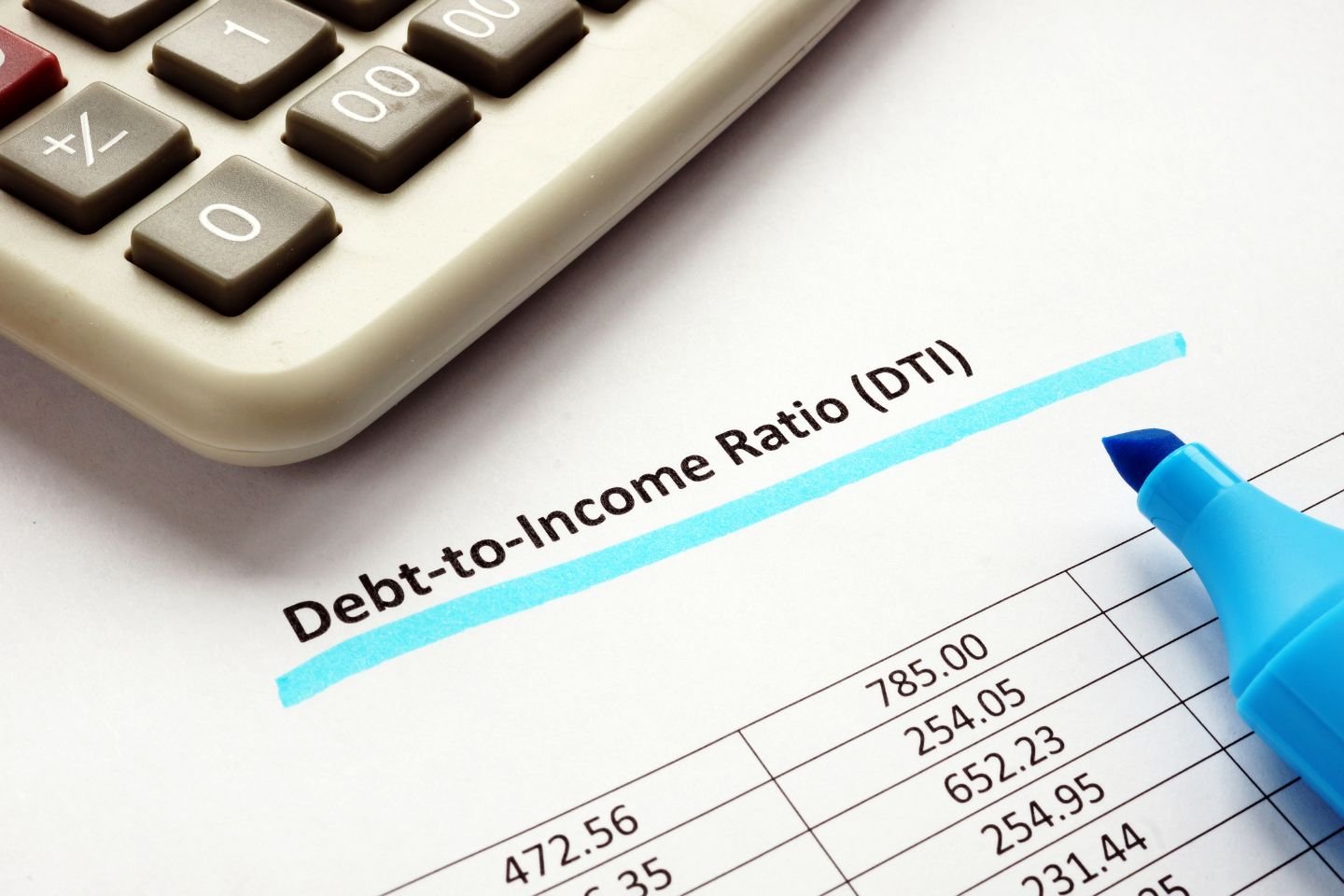A debt-to-income (DTI) ratio is a financial metric used by lenders to determine your borrowing risk. Your DTI ratio represents the total amount of debt you owe compared to the total amount of money you earn each month. It is measured as the percentage of your monthly gross income that goes to paying your monthly debt payments.
- A debt-to-income ratio measures the percentage of a person’s monthly income that goes to debt payments.
- Lenders use the DTI ratio to determine a borrower’s creditworthiness.
- A DTI of 43% is typically the highest ratio a borrower can have to qualify for a mortgage.
- A low DTI ratio indicates sufficient income relative to debt servicing
Formula and Calculation of Debt-to-Income (DTI) Ratio
The DTI ratio is a personal finance measure that compares an individual’s total monthly debt payment to their monthly gross income, which is your pay before taxes and any deductions. It is expressed as a percentage of your monthly gross income that goes to paying your monthly debt payments.
You can use the following formula to calculate your DTI ratio:
DTI Ratio = Total Monthly Debt ÷ Total Gross Monthly Income x 100
Understanding Debt-to-Income (DTI) Ratio
The DTI ratio is one of the metrics that lenders, including mortgage lenders, use to measure an individual’s ability to manage monthly payments and repay debts. A low DTI ratio demonstrates a good balance between debt and income. The lower the DTI ratio, the better the chance that the borrower will be approved or considered for the credit application.
If your DTI ratio is 15%, this means that 15% of your monthly gross income goes to debt payments each month. Conversely, a high DTI ratio can signal that an individual has too much debt for the amount of income earned each month. The lower the DTI ratio, the better the chance that the borrower will be approved or considered for the credit application.
If your DTI ratio is 15%, this means that 15% of your monthly gross income goes to debt payments each month. Conversely, a high DTI ratio can signal that an individual has too much debt for the amount of income earned each month
Borrowers with low DTI ratios are likely to manage their monthly debt payments effectively. As a result, banks and financial credit providers want to see low DTI ratios before issuing loans to a potential borrower. The preference for low DTI ratios makes sense since lenders want to be sure a borrower isn’t overextended, meaning they have too many debt payments relative to their income
Debt-to-Income (DTI) Ratio Guidelines
The maximum DTI ratio varies from lender to lender. As a general guideline, 43% is the highest DTI ratio that a borrower can have and still qualify for a mortgage. Ideally, lenders prefer a debt-to-income ratio lower than 36%, with no more than 28% to 35% of that debt going toward servicing a mortgage payment
Below is an outline of its DTI ratio guidelines:
- 35% or less is generally viewed as favorable, and your debt is manageable. You likely have money remaining after paying monthly bills.
- 36% to 49% means your DTI ratio is adequate, but you have room for improvement. Lenders might ask for other eligibility requirements.
- 50% or higher DTI ratio means you have limited money to save or spend. As a result, you won’t likely have money to handle an unforeseen event and will have limited borrowing options
Limitations of Debt-to-Income (DTI) Ratio
Although important, the DTI ratio is only one financial ratio or metric used in making a credit decision. A borrower’s credit history and credit score will also weigh heavily in a decision to extend credit to a borrower.
A credit score predicts how likely you are to repay your debts. This numeric value is based on information from your credit report, including your payment history, the number of open credit accounts, your balances relative to their credit limits, and any negative remarks like delinquencies.
The DTI ratio does not distinguish between different types of debt and the cost of servicing that debt. For instance, credit cards carry higher interest rates than student loans, but they’re lumped together in the DTI ratio calculation. If you transferred balances from your high-interest cards to one with a lower rate, your monthly payments would decrease. As a result, your total monthly debt payments and your DTI ratio would decrease, but your total debt outstanding would remain unchanged.
How to Lower Your Debt-to-Income (DTI) Ratio
There are several ways to lower your DTI ratio to make yourself more creditworthy and attractive to prospective lenders. The most common way to do so is by reducing your monthly recurring debt by making more than the minimum payment or paying off balances in full. Another way to do so is to increase your monthly gross income.
Consider taking these other actions to help improve this financial metric:
- Negotiate with your creditors
- Consolidate your debt
- Stop your credit card use
The DTI ratio can also be used to measure the percentage of income that goes toward housing costs, which for renters is the monthly rent amount. Lenders look to see if a potential borrower can manage their current debt load while paying their rent on time, given their gross income.
The Bottom Line
Debt-to-income (DTI) ratio is the percentage of your monthly gross income (your pay before taxes and other deductions are taken out) that goes to paying your monthly debt payments. Lenders use your DTI ratio to determine your borrowing risk.
A DTI of 43% is usually the highest ratio that a borrower can have and still get qualified for a mortgage; however, lenders generally seek ratios of no more than 36%. A low DTI ratio indicates sufficient income relative to debt servicing, and it makes a borrower more attractive.

